A copper conductor consists of a single copper wire or multiple copper wires(electric wire), which are described as follows:
Hard copper wire: cold processed by stretching wire, with high tensile strength, suitable for overhead power cables, distribution wires and building wires conductor.
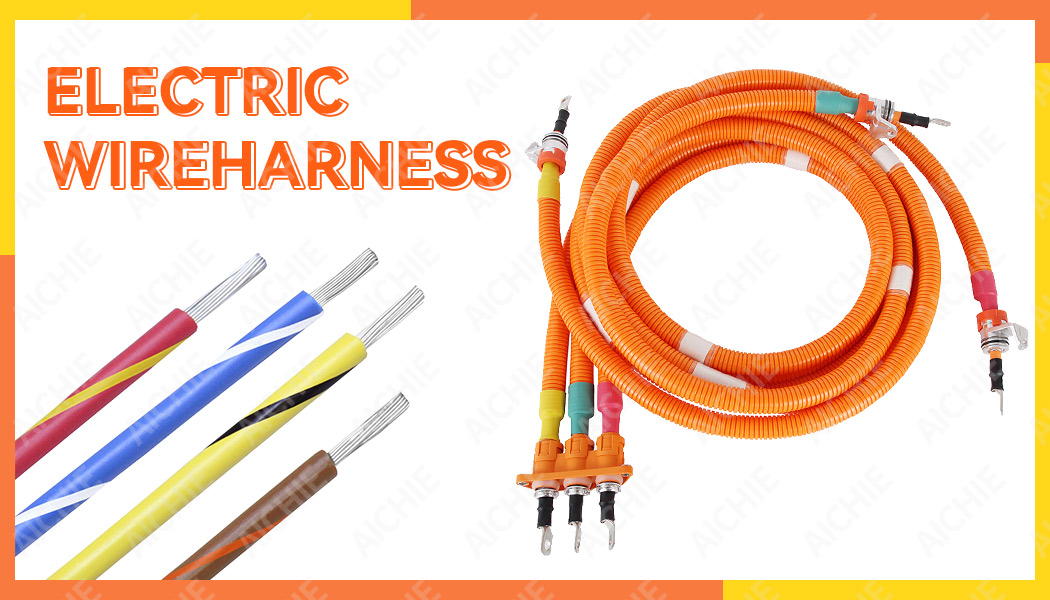
Soft copper wire: hard copper wire is heated to remove the residual stress generated by cooling processing, rich softness and bending, and has high conductivity, which is used to manufacture conductors for communication and power cables, electrical machinery and various household appliances.
Semi-hard copper wire: tensile strength between hard copper wire and soft copper wire, used for tying overhead wire and radio wiring.
Tinned copper wire: The surface of the copper wire is tinned to increase weldability and protect the copper conductor from erosion when the PVC or rubber insulation is removed, and prevent the aging of the rubber insulation.
Flat copper wire: square or rectangular copper wire, for the manufacture of large transformers or large motors such as induction coil material.
Oxygen-free copper wire: copper wire with oxygen content below 0.001% and extremely high purity, copper content above 99.99%, will not be subjected to oxygen embrittlement, used to make wires in vacuum tubes, semiconductor parts wires and very thin wires.
Enamelled wire: After copper wire is softened, the surface is coated with insulating paint, which is heated and baked dry. It is generally divided into natural resin and synthetic resin enamelled wire.
Copper foil wire: A conductor of flat, very thin copper wire wrapped around a fiber wire.
Stranding before plating: After stranding the unplated copper wire, it is plated with aluminum.
Copper-clad steel: generally used for coaxial cable signal transmission (such as TV and VCD connection, outdoor TV antenna, closed-circuit television, etc.); The harder wire has a higher tensile strength, and is used as an overhead wire when crossing rivers and other long distances in alpine areas. According to its copper thickness, the general conductivity is 21%, 30%, 40%, etc.
Alloy copper: Composed of copper and other conductor metals, such as copper-nickel alloy, used for special purpose wires.
Currently commonly used conductors are mainly as follows:
Tinned copper wire, abbreviated as TC;
Bare copper wire, English abbreviation BC;
Silver-plated copper wire, abbreviated as SC;
Silver plated copper clad steel, abbreviated as SCCS
Copper-clad steel, abbreviated CP.
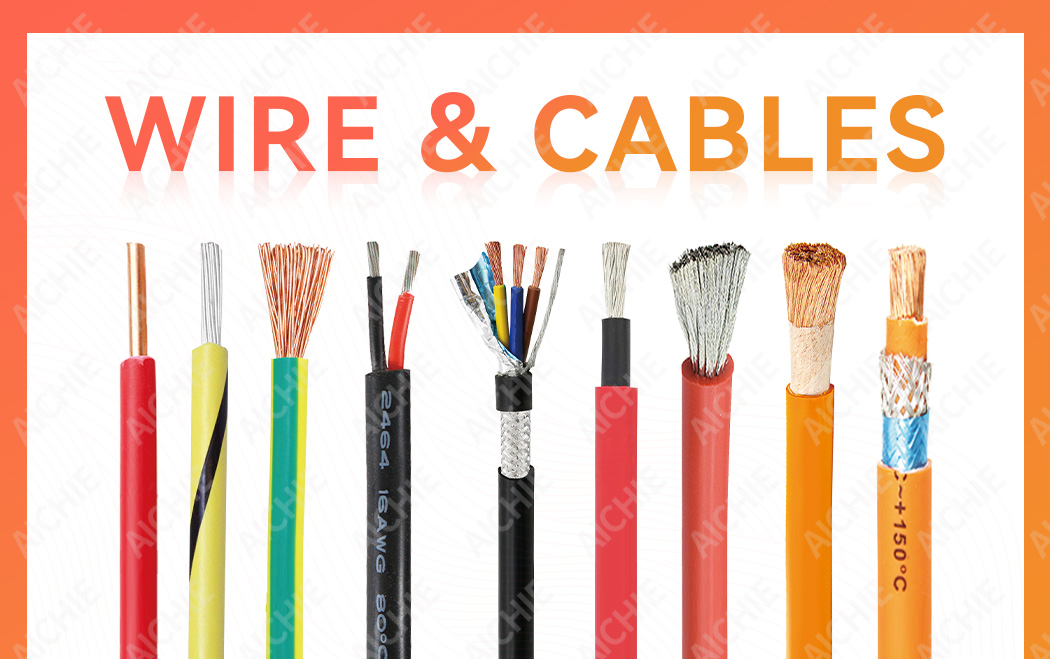
Copper wire performance differentiation overview
According to the resistivity (length of 1m, cross-sectional area of 1mm2 of the resistance value of the material), under normal circumstances we will be divided into three categories of materials:
Conductor: Resistivity below 102Ω·mm2/m
Semiconductor: resistivity of 103~108Ω·mm2/m;
Insulator: resistivity of 108Ω·mm2/m or above.
At present, the commonly used metal conductors are gold, silver, copper, etc. (the following table), taking into account the price of conductors and electrical conductivity, the most commonly used copper conductor. The conductivity is based on copper (100%), and the comparison of each conductor is as follows:
| Name | Specific gravity(g/cm³) | Conductivity constant | Remark |
| Au | 19.3 | 70.8 | Non-oxidizing, expensive |
| Ag | 10.5 | 109 | Excellent electrical conductivity, expensive |
| Cu | 8.89 | 100 | Good electrical conductivity, competitive price |
| Fe | 7.86 | 17.8 | Poor electrical conductivity, good tensile resistance |
| Al | 2.7 | 61.2 | Light weight |
It can be seen from the above table that copper has better conductivity, wide application performance, low cost, can also be tinned on its surface, which is conducive to welding, and has oxidation resistance (refers to oxidation combined with oxygen in the air).
Various properties of copper wire are introduced
Conductor resistance - The resistance of a conductor is proportional to its length and inversely proportional to its cross-sectional area.
Conductivity - The resistance of a standard soft copper wire with a length of 1m and a cross-sectional area of 1mm2 at 20 ° C is 1/58ohm(0.017241 ohm), which is called 100% conductivity. The greater the resistance, the lower the conductivity, and the two are inversely proportional.
Bending resistance - one end of the single wire is fixed, the other end is added to the weight so that the vertical downward, and then back and forth 180 degrees bending, until the wire is broken, the more bending times, the stronger the bending resistance.
Tensile force - the maximum load weight or force applied to a specimen to break during a tensile test.
Tensile strength - the tensile force per unit area that causes the specimen to break during tensile testing.
Elongation - the ratio of the length of the specimen extended to break to the original length at a specified standard distance.
Conductors at different temperatures will have different impedance, generally 20 ° C or 25 ° C as the standard, the higher the temperature, the greater the impedance.
Introduction of important high frequency parameters of copper wire
When the high-frequency current flows through the conductor, the current tends to be distributed on the conductor surface, and the closer the current is to the conductor surface, the greater the current density. This phenomenon is called the skin effect. The higher the frequency, the more concentrated the current is on the surface of the conductor, and it is conceivable that when the frequency is high enough, the current is almost only distributed in a thin layer on the surface of the conductor, and there is almost no current inside the conductor;
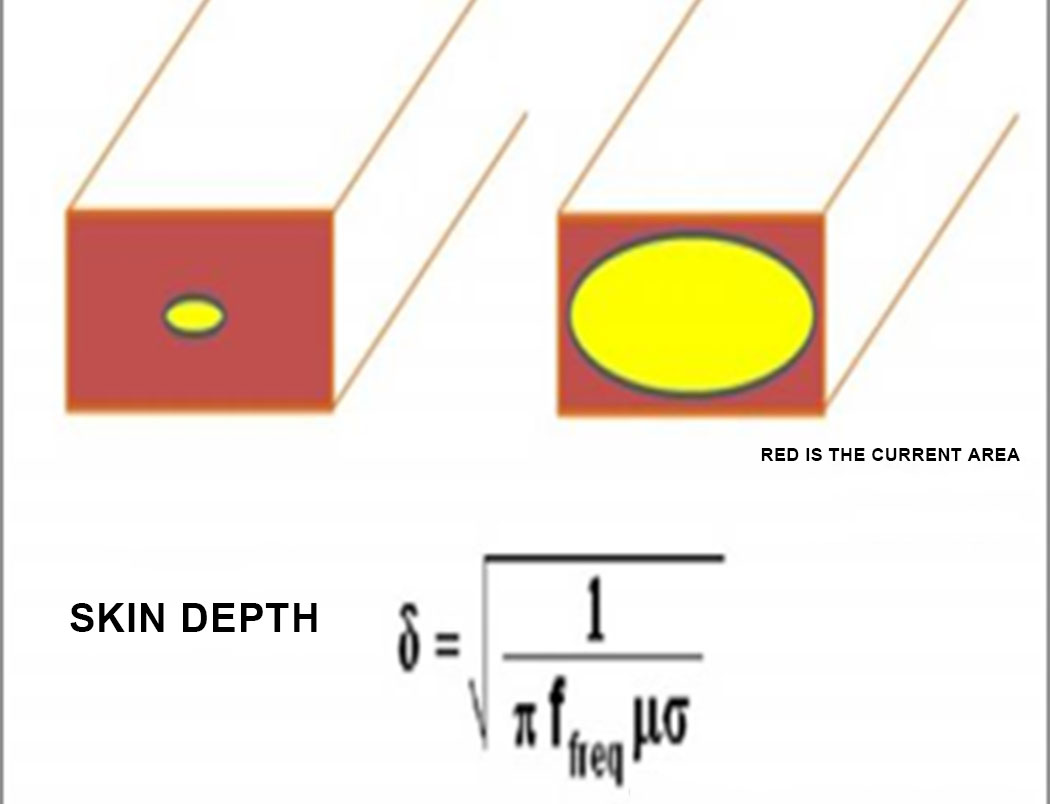
For good conductors like copper, the conductivity is extremely high, so as the frequency increases, it will soon show obvious skin effect, generally a little more than 6MHz skin depth of approximately 1mil, about 0.35mil at 55MHz or so, 1GHz skin depth of about 0.1mil, the skin effect will inevitably have a great impact on high-speed signals. When enlarged in the image below, the surface of copper is not as smooth as it looks, and the skin effect leads to increased signal loss.
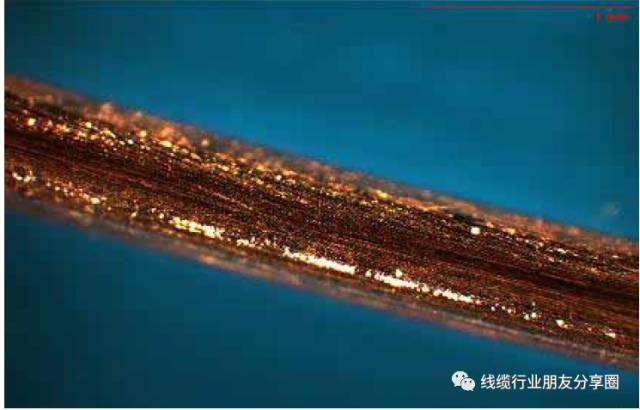
What is AWG for copper wire?
AWG (American wire gauge) American wire gauge, also known as Brown & Sharpe wire gauge, is a standard for measuring wire diameters. This standardized wire gauge system was first used in the United States in 1857. In addition, AWG is an abbreviation of Arrayed Waveguide Grating.
The U.S. standard for differentiating wire diameters, also known as B&S threads (i.e. Brown & Sharps threads) Copper wire diameters are usually measured in AWG (U.S. Wire Specification) units. The number in front of the AWG (e.g. 24AWG, 26AWG) indicates the number of holes the wire will pass through before forming the final diameter. The larger the number, the more holes the wire will pass through and the smaller the diameter of the wire. Thick wires have better physical strength and lower resistance, but the thicker the wire, the more copper is required to make the cable, which can lead to heavier cables, more difficult to install, and more expensive cables. The challenge in cable design is to use the smallest possible diameter wire (reducing cost and installation complexity) while ensuring that the maximum capacity of the wire is achieved at the necessary voltage and frequency. In our cable industry, in the specification of UL758, there is a special specification for the conductor specification standards, its standard is the above AWG, that is, the American Wire Guage, that is, the standard referred to by the cable companies, it divides the conductor into single copper (single copper conductor) and stranded copper (multiple copper conductor synthesis of copper conductor). Single copper is divided into specifications according to its diameter; The specifications of stranded copper are divided according to the size of the cross-sectional area, as shown in the following table:
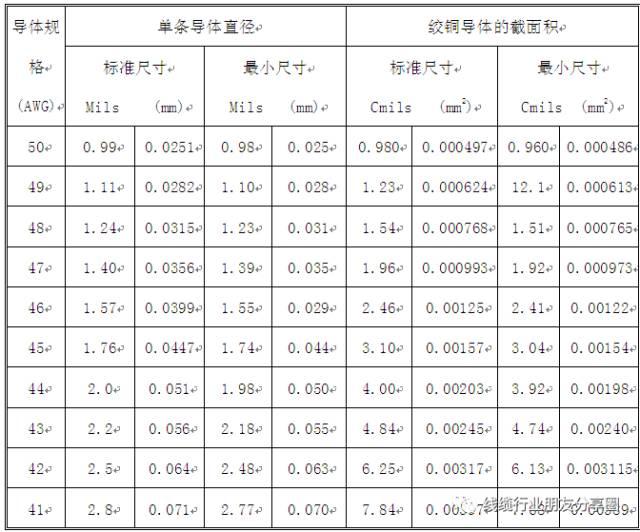
When the national standard describes the cross-sectional area of the conductor, it is generally expressed by how many square meters (square millimeters). A few square is a nominal value stipulated by the national standard, and a few square is the user's choice of wire and cable according to the load of the electronic wiring harness. The square number of wires is a verbal term in the decoration of hydropower construction, and the square number of wires is often said to be without a unit, that is, square millimeters. The square of the wire is actually the cross-sectional area of the wire, that is, the area of the circular cross-section of the wire, in square millimeters. In general, the experience load is when the power grid voltage is 220V, the experience load per square wire is about one kilowatt. Copper wire can carry 1-1.5 kilowatts per square, aluminum wire can carry 0.6-1 kilowatts per square. Therefore, an appliance with a power of 1 kilowatt only needs to use one square of copper wire. Specific to the current, the general copper wire can carry 3A to 5A current per square when the short distance is transmitted. Heat dissipation conditions are good to take 5A/ square millimeter, not good to take 3A/ square millimeter.
Conversion method: Know the square of the electronic wire harness, calculate the radius of the wire with the formula for the circular area: the square number of the wire (square mm) = PI (3.14) x the square of the wire radius (mm)
Know the square of the electronic wire harness, calculate the wire diameter is the same, such as: 2.5 square wire cable diameter is: 2.5÷3.14=0.8, and then square to get 0.9 mm, so the wire diameter of 2.5 square cable is: 2×0.9 mm = 1.8 mm; Know the diameter of the electronic wire harness, calculate the square of the wire also use the formula to calculate the circular area: the square of the wire = PI (3.14) x the square of the diameter of the wire / 4 cable size is also nominal with the square, multiple strands of wire is the sum of the cross-sectional area of each wire; So AWG and square both represent the cross-sectional area of the conductor, so do 1AWG and 1 square (mm²) represent the same cross-sectional area? See the following table for the correct answer: Formula ==3.14* (diameter of a single root /2) * (diameter of a single root /2) * Total number of roots.
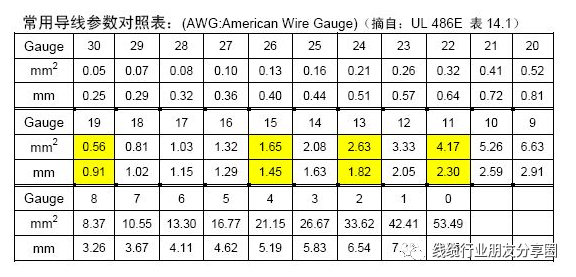 Now everyone knows how to convert AWG numbers and square them. Generally speaking, we all know that copper has excellent electrical conductivity, so it is widely used in the field of electricity, but copper is not a superconductor after all, and it also has a certain impedance, and the passing of current will also cause heat. Therefore, the maximum CurrentCarryingCapacity (current carrying capacity) of the wire is defined as the maximum current that the conductor or insulator can carry before melting. For the single core bare copper wire, due to its high melting point of 1083.4 ° C, the current it can bear can be said to be very high, but for the insulation layer of the wire this temperature is too high, the melting point of the copper has not yet reached the insulation layer has all melted, resulting in a short circuit between the wires. Therefore, for the wire of the PC power supply, the maximum current that it can withstand is the maximum current before the insulation layer melts. The applicable temperature of the insulation layer of different materials is different, according to the specification is required to be marked on the wire, according to UL1581 or UL758, the national standard CCC will require the maximum applicable temperature of the standard wire on the surface of the wire, printed on. Taking the common 18AWG wire as an example, when the maximum applicable temperature of its insulation layer is 80 ° C, the current carrying capacity of the wire is 15A. If this wire is used in the power supply of the PCI-E interface, we can learn from the power supply interface information that the PCI-E power supply interface theoretically can bear the current of 8A, and the use of 18AWG wire can fully meet the demand. However, for a wire with two 6+2pinPCI-E power supply interfaces, since the interfaces are in parallel, the maximum current required for the front-end wire is theoretically 16A. At this time, this wire can no longer meet the requirements, and it is necessary to replace it with a 16AWG wire or an 18AWG wire with an insulation layer and a temperature of 105℃. The maximum withstand current of the latter is 18, so the selection of conductor specifications is very important, whether it is the national standard CCC square or the American standard AWG, in the end, it is the current load or the value of the conductor resistance to select and match commercial! At present, UL's sampling test of AWG specifications basically requires resistance to make the final judgment!
Now everyone knows how to convert AWG numbers and square them. Generally speaking, we all know that copper has excellent electrical conductivity, so it is widely used in the field of electricity, but copper is not a superconductor after all, and it also has a certain impedance, and the passing of current will also cause heat. Therefore, the maximum CurrentCarryingCapacity (current carrying capacity) of the wire is defined as the maximum current that the conductor or insulator can carry before melting. For the single core bare copper wire, due to its high melting point of 1083.4 ° C, the current it can bear can be said to be very high, but for the insulation layer of the wire this temperature is too high, the melting point of the copper has not yet reached the insulation layer has all melted, resulting in a short circuit between the wires. Therefore, for the wire of the PC power supply, the maximum current that it can withstand is the maximum current before the insulation layer melts. The applicable temperature of the insulation layer of different materials is different, according to the specification is required to be marked on the wire, according to UL1581 or UL758, the national standard CCC will require the maximum applicable temperature of the standard wire on the surface of the wire, printed on. Taking the common 18AWG wire as an example, when the maximum applicable temperature of its insulation layer is 80 ° C, the current carrying capacity of the wire is 15A. If this wire is used in the power supply of the PCI-E interface, we can learn from the power supply interface information that the PCI-E power supply interface theoretically can bear the current of 8A, and the use of 18AWG wire can fully meet the demand. However, for a wire with two 6+2pinPCI-E power supply interfaces, since the interfaces are in parallel, the maximum current required for the front-end wire is theoretically 16A. At this time, this wire can no longer meet the requirements, and it is necessary to replace it with a 16AWG wire or an 18AWG wire with an insulation layer and a temperature of 105℃. The maximum withstand current of the latter is 18, so the selection of conductor specifications is very important, whether it is the national standard CCC square or the American standard AWG, in the end, it is the current load or the value of the conductor resistance to select and match commercial! At present, UL's sampling test of AWG specifications basically requires resistance to make the final judgment!
Tags :